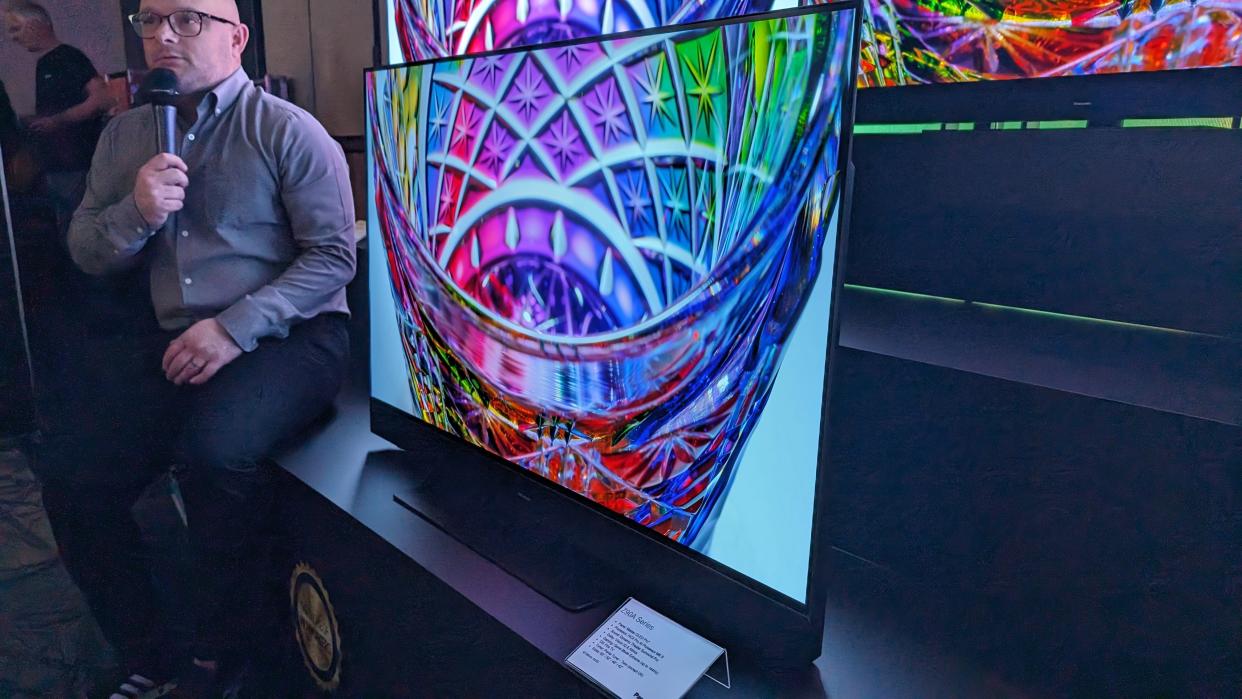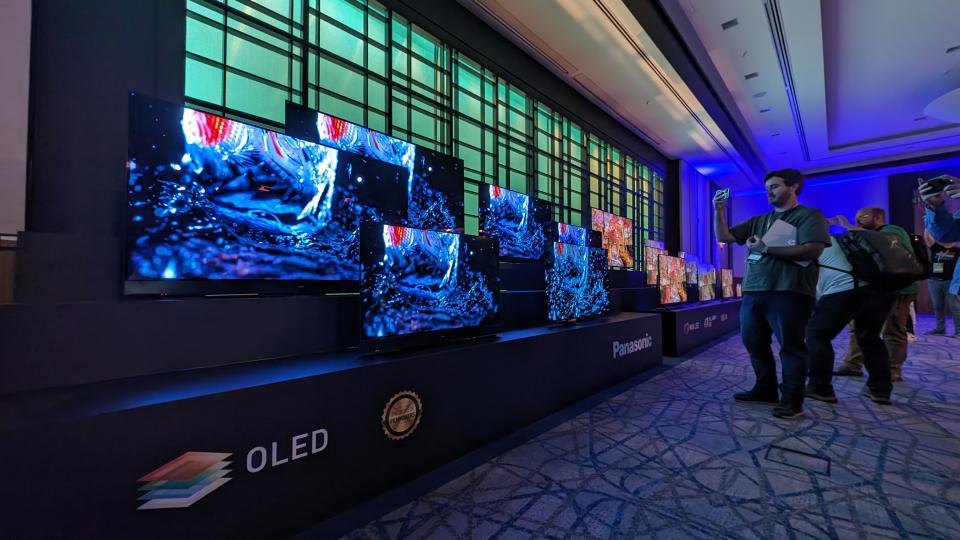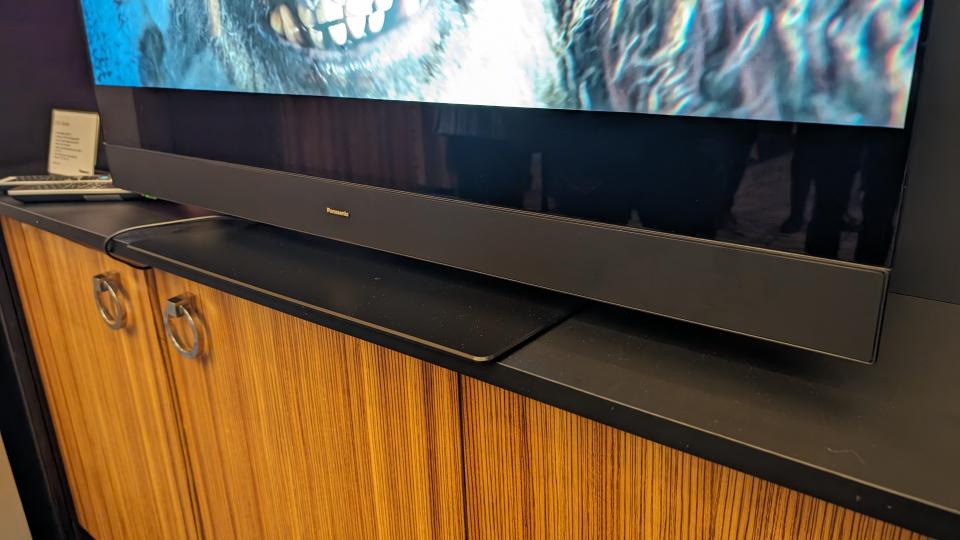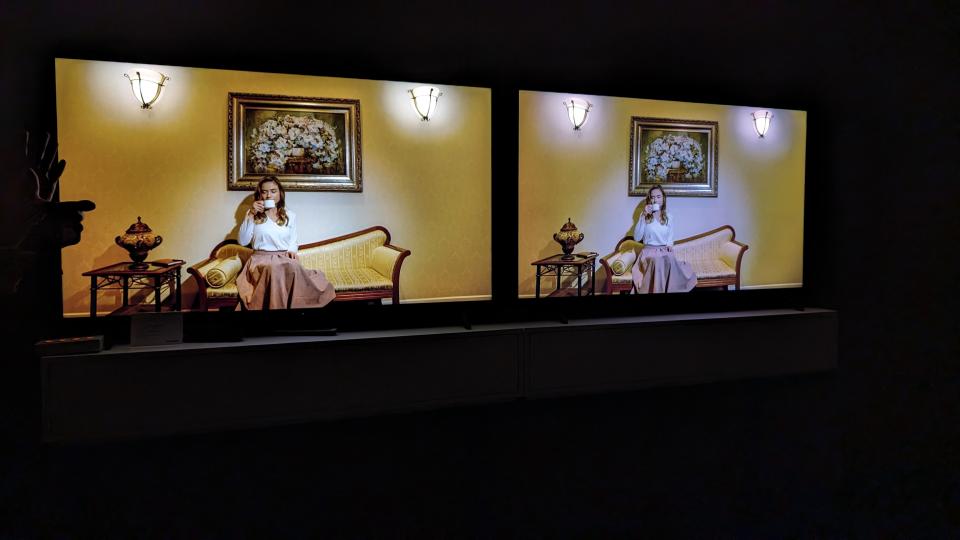I spent 48 hours staring at Panasonic's new OLED and Mini LED TVs – these are 3 key things I learned

This week I jetted off to Dusseldorf, Germany, and spent two intense days looking at Panasonic’s latest line of new OLED and Mini LED TVs.
And while my corneas are recovering from the trip, which involves living like Gollum in a dark demo room, straining to see every minute detail on show, the experience has given me a keen insight into the tech giant’s home cinema plans.
Here's what I found out.
1. Panasonic went for MLA for one reason

There are currently two OLED TV technologies vying for cinephiles' attention: Micro Lens Array (MLA) by LG Display and QD-OLED by Samsung.
Both are in direct competition as they share a common aim to radically boost OLED TVs’ max brightness levels. We’ve found plenty to like about both with key sets including the QD-OLED-powered Sony A95L and MLA-equipped Panasonic MZ2000 both earning perfect marks when we reviewed them last year.
This week, though, Panasonic revealed specifically why it went for MLA with the MZ2000 and its newer Z95A flagship OLED. Panasonic’s head of digital training, Neil Loyd Meek, told us the reason the company favoured MLA is pretty simple: max brightness.
“We never rule a technology out. We always consider everything, but when we looked at our legacy for delivering a true-to life picture that’s accurate and as the director intended, MLA was the perfect choice for us,” he said.
“The big thing is brightness. When we went to MLA last year we made a massive improvement there and from the demo you saw today [of the Z95A] you can see we’ve made yet more gains there."
Panasonic is one of many TV makers to choose MLA for its current generation sets based on the brightness improvements it offers. Philips’ senior director of product strategy and planning, Danny Tack, flagged higher peak brightness as a reason it opted to use the tech in the Philips OLED908 during an interview with What Hi-Fi? last year.
2. Its integrated soundbars aren’t going anywhere

Panasonic tends to load its top end and step-down OLED TVs with attached soundbar systems and that trend won’t end anytime soon, based on the conversations I had at the event. Chatting to multiple spokespeople, they all made clear the firm not only thinks customers like the set-up, but that it plans to expand its use. That means this year the feature will roll out to every size of Panasonic's latest mid-range OLED the Panasonic Z90A.
For some this will be a bonus, as many people don’t bother adding a separate sound system to their TV, even if they’ve invested a lot of money in an OLED. But many of the What Hi-Fi? Team, myself included, are a little sceptical.
At What Hi-Fi? we always recommend investing in a separate soundbar or speaker package when building your home cinema set-up. This is because we’re yet to find a built-in TV speaker package that can match the performance of a good soundbar, let alone surround-sound set-up.
This includes the speaker bar set-ups on past Panasonic OLEDs such as the MZ2000 and MZ1500. We’d have liked to have seen the company contemplate going in the other direction, and offer a lower priced option that doesn’t have the bar. This would let buyers instead invest the money they save in a speaker set-up or soundbar they’ll actually use.
3. It has big plans for Mini LED too

For years now OLED has been the headline grabbing TV tech of choice in the top end of the market. But at the event I saw first hand evidence, Panasonic also has pretty big plans for the competing Mini LED tech that’s becoming increasingly common in the mid-range TV market.
This was showcased during a demo where I enjoyed a head-to-head shootout between the new Panasonic W95A and last year’s MZ950. The demo was one of the highlights of the event as, based on what I saw, the jump in quality was palpable.
The demo consisted of two pieces of test footage. The first had the two running a panning shot of a vintage car in a spotlight. The main thing that was immediately noticeable was how much deeper the black level was on the W95A, which made the older MZ950’s dark segments look grey by comparison.
The second was a short video clip of a model standing in a bright yellow room. Here the W95A offered significantly more lifelike colours, with skin tones in particular having a more naturally vibrant feel than the MZ950's identical footage.
I can’t make any final verdicts on picture performance as I wasn’t in control of either sets’ settings or the source and footage demoed. But the fact Panasonic was so keen to show how much progress it has made with Mini LED and that it has plans to expand its use of it is certainly interesting.
It’s also in line with other TV makers' current strategies, with Sony also expanding its use of Mini LED this year, using it on its giant Bravia 9, while Hisense, Samsung and TCL all continue to use the panel tech in the majority of their mid-range sets.
MORE:
These are the best OLED TVs we’ve reviewed
We rate the best surround sound systems
Here are our picks of the best 65-inch TVs

